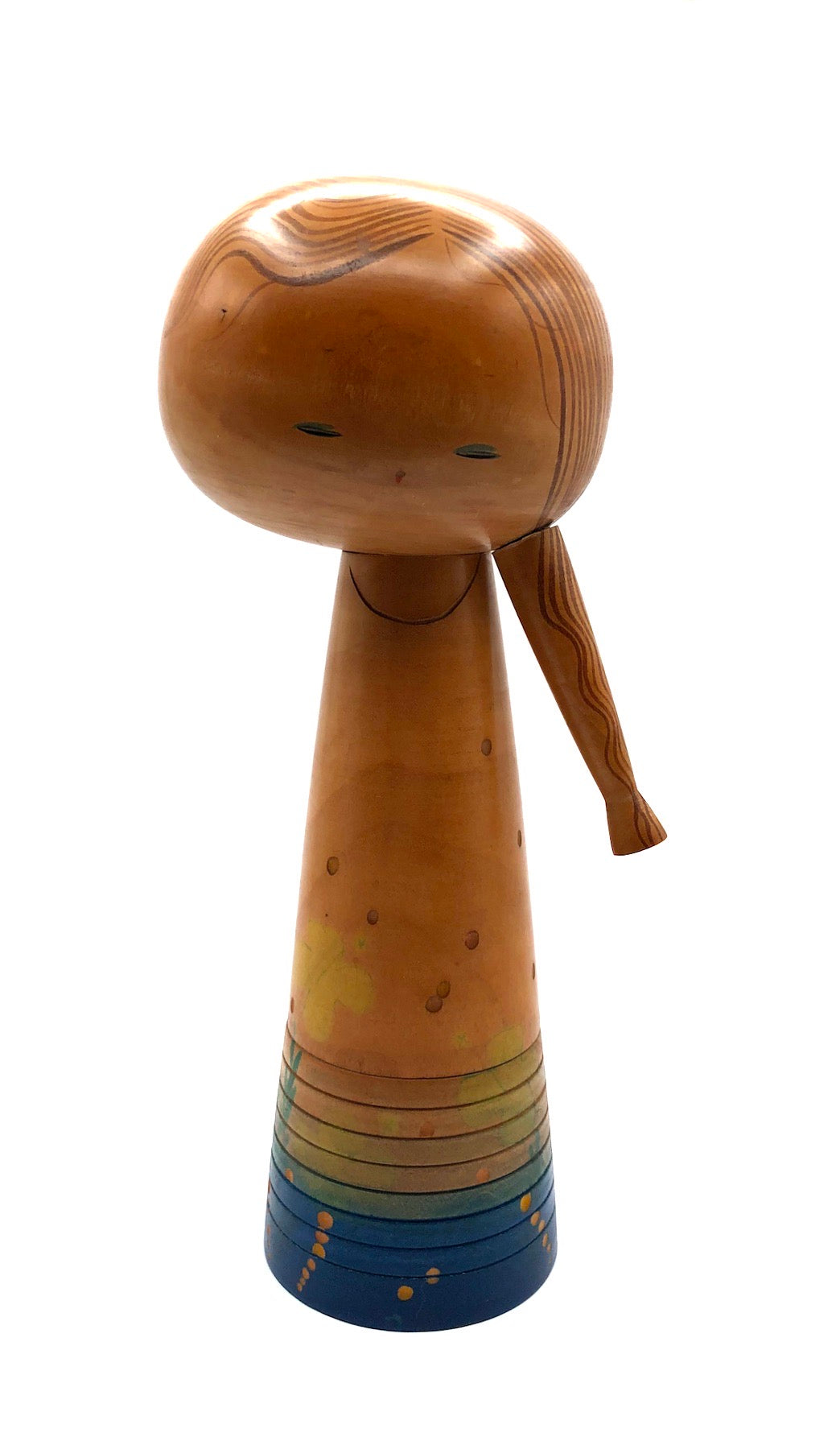
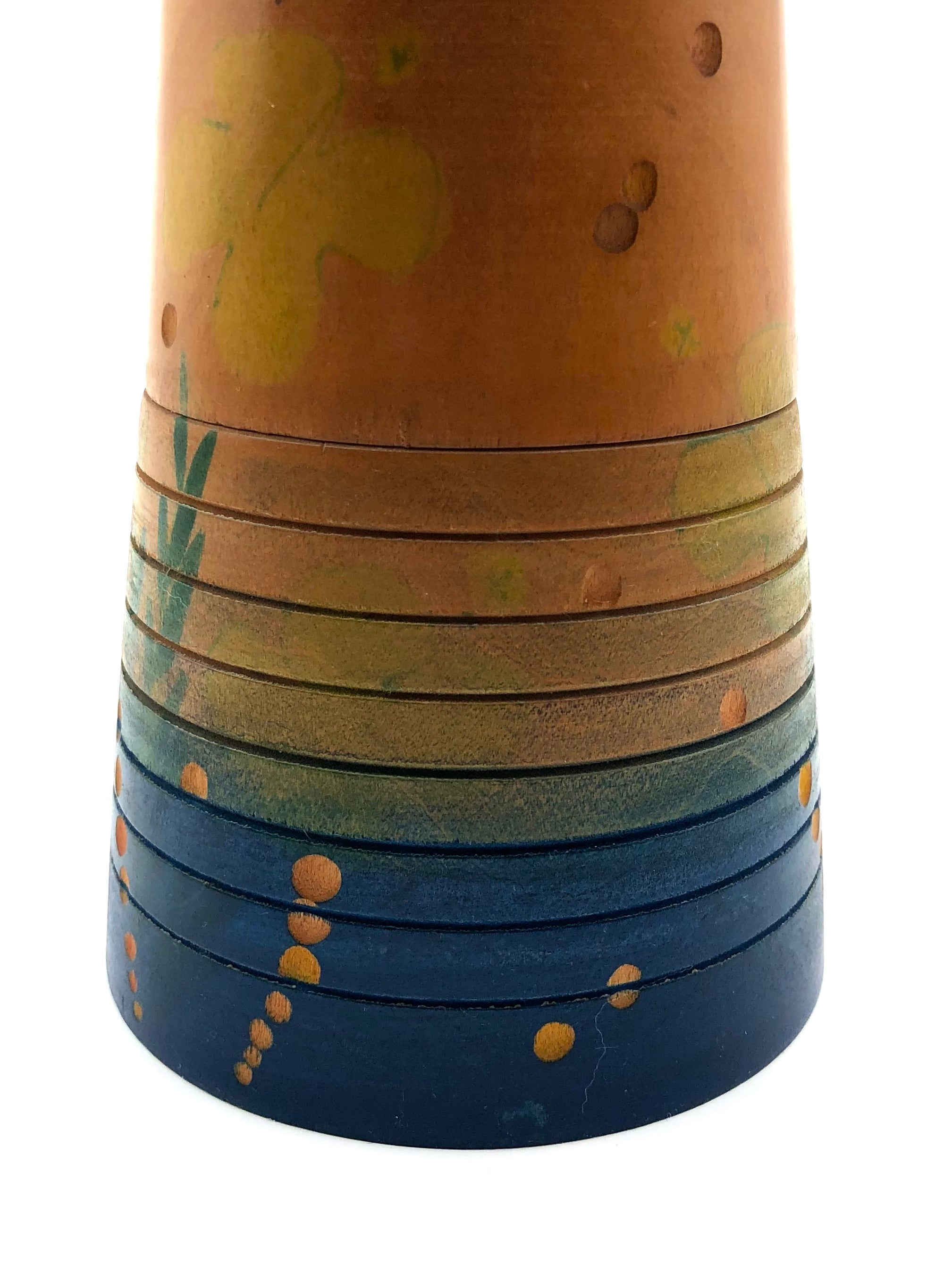
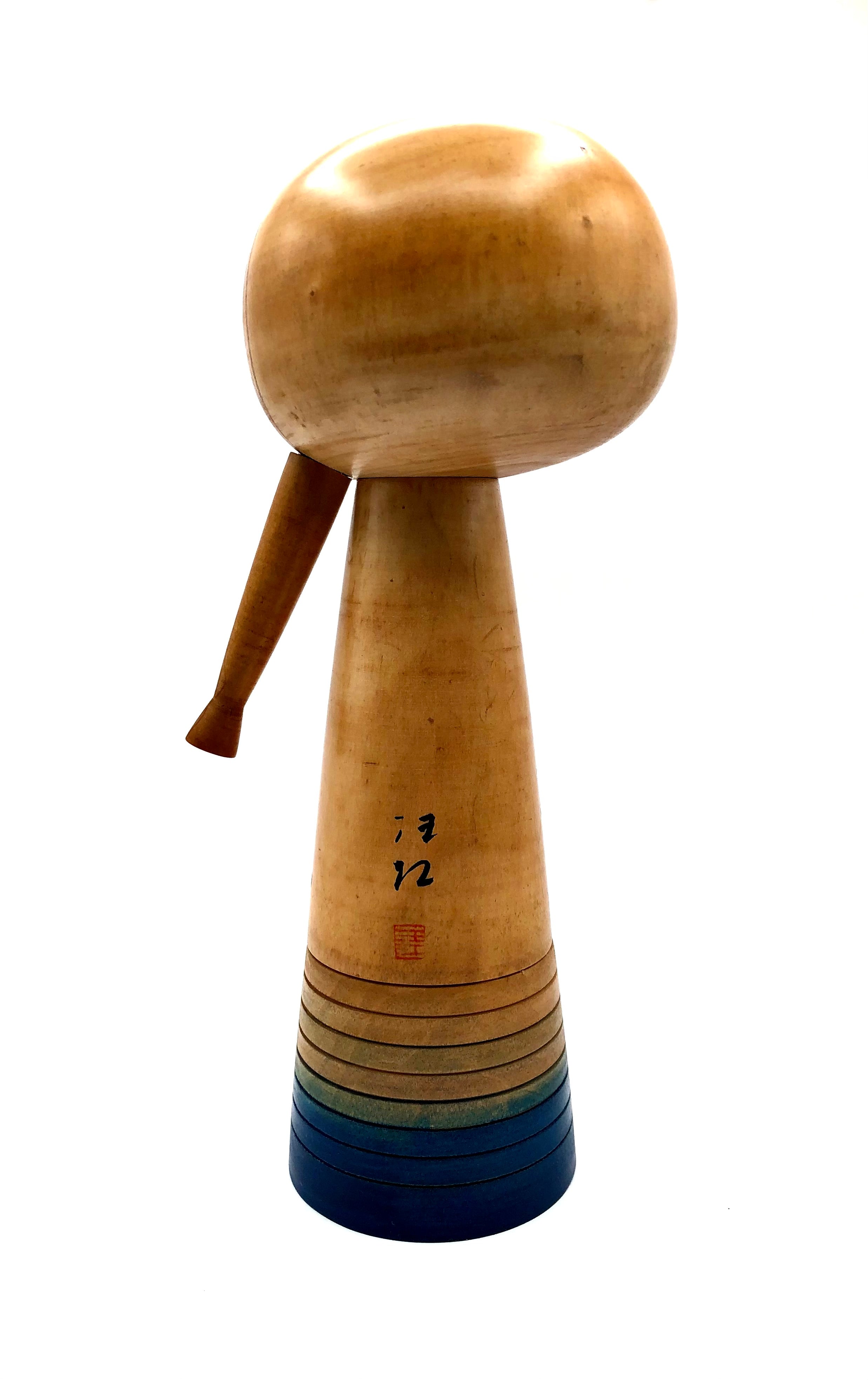
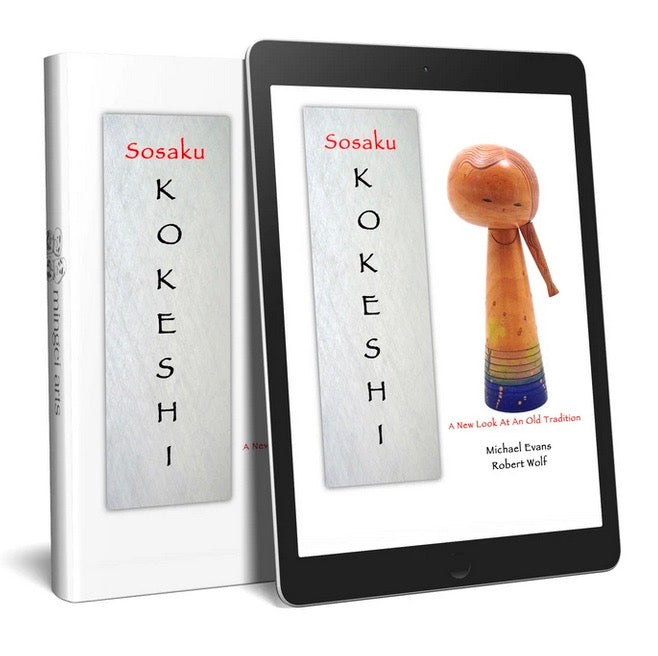
Vintage Sosaku Kokeshi entitled: “Mittsuami no on'nanoko | Braided Girl” by Fukushima, Hiroe
Dimensions: 13-1/4” h
This Kokeshi is an extremely rare “one-off” doll that takes the traditional, tapered cylindrical form of the Kokeshi, and adds a distinctive twist of a “Braid” blowing in the wind. This style of doll came into fashion when Western hairstyles and fashion became popular throughout Japan (1950s era). At the time, this element was a symbol of innocence, showing a unique interpretation that identifies the “Braid”. It is hand-formed, using Dogwood, (Hanamizuki). Beyond the Braid the additional features that make this doll a rare and unique creation, are the contrasts to the smooth texture of the form emphasizing the natural wood and body form. On the bottom of the Kimono, Fukushima-san, who was originally a painter, incorporated flowers and aquatic plants, deep blue water, bubbles, and sea life as a central motif, with ‘Rokuro moyo’, horizontally-carved line work defining the lower section of the Kimono. Her off-set, tilted head, and face are very expressive, denoting the difference between the neck with all elements defining the figure utilizing sumi-e’ drawn, ‘one-stroke’ distinctive eyes, and small red nose (Hitofude-me). Finally, the head is topped with an artistic interpretation of the wavy and stylized hairstyle that flows onto the braid. Fukushima-san signed the back of the doll in beautiful script, with his red “Hanko”. Note: there is no published information on this artist other than he made a few Kokeshi, and continued his professional work in painting.
This piece was recognized as a “Prime Minister” award winner appearing in their first Kokeshi Art Exhibition catalog. The piece was also included in the 2022 publication of Sosaku Kokeshi: Celebrating the Major Artists of the Creative Movement. This doll was also featured in the first edition of Sosaku Kokeshi: A New Look at an Old Tradition which is out of print. A signed copy of this book is part of this sale.
Condition: Pristine, meaning that the piece retains its original craft/workmanship showing a wonderfully developed patina commensurate with its age which corresponds to its vintage. The doll is void of damage, cracks, or breakage. This doll meets all the standards of the collectible Japanese Sosaku Kokeshi by Fukushima-san.
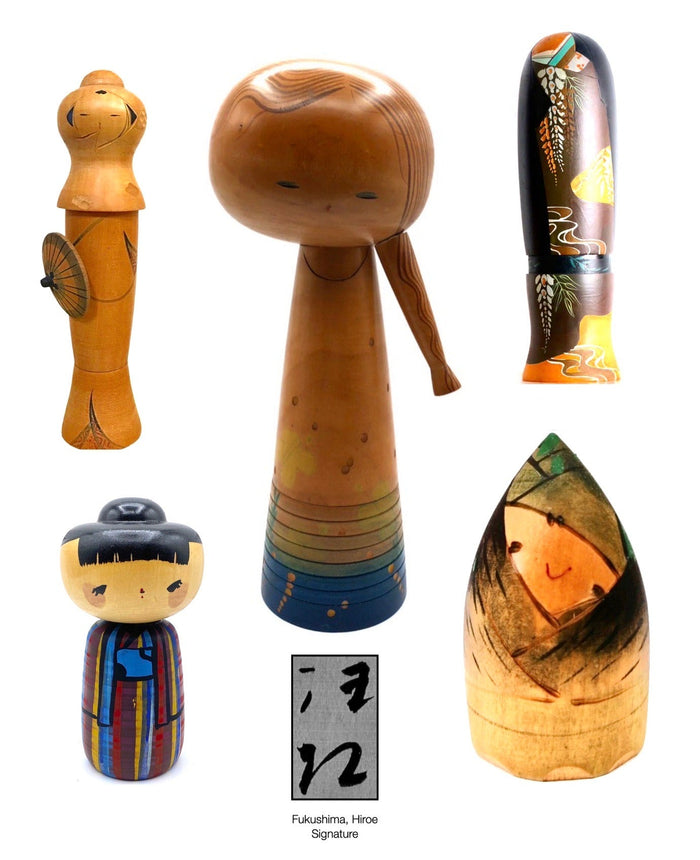
Artisan
Woodworker: Fukushima, Hiroe
Biographical History:
Hiroe-san produced Kokeshi during a short period from 1970-1979, for which there is little biographical data published on this artist. Still, as researchers and collectors, we felt it was most important to represent all Sosaku Kokeshi artists, particularly a female since most woodworkers were men, and whether or not the artist has a written account of his or her life. Each shows the diversity of this cultural specialization and the creative work produced by this artist. Because she worked for a very short period we see very few dolls that have been produced but all are extremely creative in their form and painted details.
Collector's note – descriptive qualities, standard characteristics & ornamentation styles:
Most of her creations appear in a traditional cylindrical form of the Kokeshi, some tall and some small representing children. The difference is that Hiroe-san adds numerous three-dimensional elements to express the feeling she is trying to emphasize incorporating multiple features such as extremely expressive eyes, and unusual clothing, as well as the unique forms of heads, all very painterly in beautiful colors and employing flowers (some in the form of bamboo shoots), water, and different elements of the natural environment on the body of each garment. Each face of her dolls shows a diversity of age, hairstyle, fashion, and contemporary attitude. She enjoys utilizing woods such as cherry, (sakura) having light background colors to complement her painterly skills.
Explore & Learn More about Woodworker: Fukushima, Hiroe